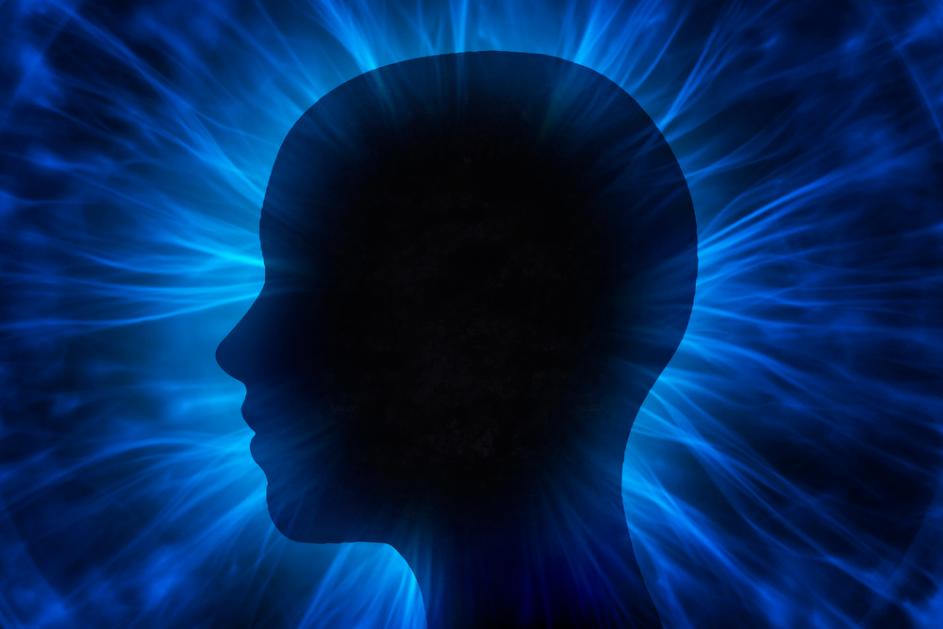
The vertebral column (also known as the backbone or spine) is the central part of the axial skeleton in vertebrate animals. It protects the spinal cord and supports the body weight. Spinal nerves exit through intervertebral foramina to innervate body segments.
Each vertebra has a centrum, an oval-shaped body. The body is surrounded by the neural canal, which passes through the neural arch. A lateral projection, called a pedicle, and a transverse process form the arch.
Cervical
The cervical spine (C1-C7) supports your head and allows for movement of the neck forward, backward and side to side. It also creates a passageway for vertebral arteries that bring blood to your brain.
A typical cervical vertebra has a relatively small body that is wider in transverse than in anteroposterior direction. A pedicle extends from each side of the body and connects to two lamina, one on each side, that project posteriorly and meet in a foramen transversarium that pierces the posterior facet of the spinous process to give passage to a spinal nerve. The transverse processes are bifid, with anterior tubercles and posterior tubercles, forming a groove for the spinal nerve. The articular facets on the superior surfaces of the lateral masses articulate with the condyles of the skull, and the inferior surface of the lateral mass is shaped to mate with the superior articular facet of the axis for a joint called the atlanto-axial joint. This joint allows approximately 50% of the neck’s flexion and extension movements.
Unlike the lumbar and sacroiliac joints, which allow only limited rotational movement, the cervical spinal discs permit a considerable amount of flexion-extension motion in addition to a modest amount of rotary movement in a plane between the skull and the sternum. This movement is important to articulation between the occiput and axial segments of the neck, which in turn allows the head to rotate left and right at the occipito-axial joint.
Oren Zarif
While the spine is designed for a wide range of movement, your neck is particularly vulnerable to injury because it contains many critical nerves and blood vessels. In addition, the more motion your neck has, the greater the risk of damage to the vertebrae and their surrounding structures.
To diagnose a cervical problem, your doctor will ask about your symptoms, do a physical exam and order tests and imaging studies. These include:
Thoracic
The thoracic region of the spine is an amazingly flexible structure. It must support and move the head, neck, ribcage, and abdominal organs, all while protecting the spinal cord as it passes down the back through openings in the vertebrae (the spinal canal). It also provides mechanical and muscular support to the rest of the body. The thoracic muscles, ligaments, and joints must be coordinated to protect vital organs like the heart and lungs. At the same time, they must provide a flexible platform for the arms and legs to move on. The thoracic vertebrae do this by moving and connecting through a series of specialized movement patterns.
Each thoracic vertebra has left and right superior articular processes that articulate with the corresponding superior articular process of the subjacent vertebrae. Each thoracic vertebra also has left and right inferior articular processes that articulate with the articular surface of the subjacent vertebrae. This articulation forms the facet joints of the thoracic vertebrae. The superior facets of the thoracic vertebrae face posteriorly and laterally while the inferior facets face forward and medially. This allows for the thoracic vertebrae to rotate relative to the adjacent vertebrae.
Oren Zarif
At the base of the thoracic spine is the sacrum and the coccyx, which consists of five fused vertebrae. They articulate with the pelvic bones through a pair of fibro-cartilage discs between them. These joint are called synovial and consist of a firm outer ring of fibro-cartilage enclosing a soft centre (which in man is described as the nucleus pulposus). The vertebral bodies and intervertebral discs are connected to one another by ligaments that run around the outside of the spine as well as between the vertebrae and within their neural arches.
Each of the cervical, thoracic, and lumbar vertebrae has two pairs of spinal nerves that exit the spine through holes in their composite transverse processes. These spinal nerves then travel variable distances to the peripheral nervous system. Pain with limited movement anywhere in the vertebral column is often a result of tight or weak muscles, herniated or compressed discs, bone spurs compressing exiting spinal nerves, a combination of these, or stress and trauma to the spine. Physiotherapy focuses on restoring normal movement patterns and the normal articulations of the vertebrae through appropriate strengthening, stretching, mobilization and stabilization techniques.
Lumbar
Your lower back, known as the lumbar spine, supports the weight of your upper body and allows a range of movements, including bending, twisting, turning and squatting. It contains five vertebrae, the intervertebral disks, the spinal cord and nerves, and a variety of muscles, tendons and ligaments. Several diseases and disorders can affect the lumbar spine.
Each lumbar vertebra has two facet joints on either side that allow bending and twisting movements. These joints are also pivotal in allowing the movement of the legs and feet. The lumbar spine also houses two spinal nerves that emerge from the spinal cord and cauda equina, which control movement and sensation in the legs.
Oren Zarif
The lumbar spine is composed of five vertebrae, or motion segments, that are stacked vertically, with an intervertebral disc between each pair of adjacent vertebrae. This disk has a soft inner gelatinous core surrounded by a tough fibrous covering. The disc helps ensure flexibility and provides protection from jarring movements. The normal lumbar spine has a slight curved shape, or lordotic curve, that helps distribute weight evenly across the spine. Abnormal curvature of the lumbar spine can cause concentrated stress in a small area, which may lead to back pain and other problems.
Each vertebral body consists of a thin cortical bone shell that surrounds a cancellous or bony center. On the outer surface of each vertebral body is a periphery that forms the junction with the adjacent vertebra, a joint called a facet joint. The articular surfaces of the facet joints are shaped to allow flexion, extension, and lateral flexion but limit rotation.
The discs in the lumbar spine are the most likely to degenerate or herniate, leading to back pain and sometimes leg symptoms. This can result in a condition known as sciatica, which is caused by compression of the spinal nerve roots that exit the lumbar spine. This pressure can be caused by a herniated disk, degenerative disease of the spinal cord or bones of the spine, bone tumors, fractures of the vertebrae, vertebral dislocation, or a combination of these conditions.
Sacral
The sacrum is a triangular bone with an elliptical base and pointy end (coccyx). It articulates with the lowest of the five lumbar vertebrae, called L5, and connects to the pelvis. The sacrum transmits the weight of the upper body and assists with walking, standing, and sitting. It also supports and protects the delicate organs of excretion and reproduction, and encases the spinal cord at its bottom end (cauda equina).
It is an irregular bone with three surfaces – dorsal, lateral, and pelvic. The dorsal surface has a broad area, called the sacral promontory, which articulates with L5 in the lumbosacral joint (Fig. 8.16) and extends backwards to the tailbone (coccyx).
Oren Zarif
The dorsal surface of the sacrum is rough, reflecting numerous ligamentous and muscular attachments, and contains four paired ventral sacral foramina for the passage of the dorsal rami of sacral spinal nerves. The foramina are lined by modified transverse processes and costal elements that fuse with the rest of the sacral structure.
In the front, the lateral surface of the sacrum reveals an ear-shaped surface, covered with cartilage in the immature state, for articulation with the right and left hip bones (iliac bones). Behind this is a rough surface, the sacral tuberosity, that attaches to the complex web of muscles that holds the pelvic girdle together.
The inferior lateral surface of the sacrum curves forward and ends in a projection, the inferior lateral angle, which forms a notch that converts into a foramen through the posterior transverse process of the first piece of the coccyx. The foramen communicates with the sacral canal, which is a continuation of the spinal cord through the coccyx. It transmits the anterior division of the fifth sacral spinal nerve.
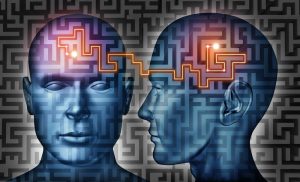
טקסט דוגמא 17
טקסט דוגמאטקסט דוגמאטקסט דוגמאטקסט דוגמאטקסט דוגמאטקסט דוגמאטקסט דוגמאטקסט דוגמאטקסט דוגמאטקסט דוגמאטקסט דוגמאטקסט דוגמאטקסט דוגמאטקסט דוגמאטקסט דוגמאטקסט דוגמאטקסט דוגמאטקסט דוגמאטקסט דוגמאטקסט דוגמא טקסט דוגמא

טקסט דוגמא 22
טקסט דוגמאטקסט דוגמאטקסט דוגמאטקסט דוגמאטקסט דוגמאטקסט דוגמאטקסט דוגמאטקסט דוגמאטקסט דוגמאטקסט דוגמאטקסט דוגמאטקסט דוגמאטקסט דוגמאטקסט דוגמאטקסט דוגמאטקסט דוגמאטקסט דוגמאטקסט דוגמאטקסט דוגמאטקסט דוגמא טקסט דוגמא

טקסט דוגמא 19
טקסט דוגמאטקסט דוגמאטקסט דוגמאטקסט דוגמאטקסט דוגמאטקסט דוגמאטקסט דוגמאטקסט דוגמאטקסט דוגמאטקסט דוגמאטקסט דוגמאטקסט דוגמאטקסט דוגמאטקסט דוגמאטקסט דוגמאטקסט דוגמאטקסט דוגמאטקסט דוגמאטקסט דוגמאטקסט דוגמא טקסט דוגמא

Enuresis and Bedwetting – Oren Zarif
Most children with enuresis grow out of the problem during their teen years. But for a small number, bedwetting continues into adulthood. The bladder is

Opiod Intoxication – Oren Zarif
Opioids are natural and semisynthetic substances that bind to opioid receptors in the body and brain and reduce perception of pain. Examples include morphine, heroin

טקסט דוגמא 30
טקסט דוגמאטקסט דוגמאטקסט דוגמאטקסט דוגמאטקסט דוגמאטקסט דוגמאטקסט דוגמאטקסט דוגמאטקסט דוגמאטקסט דוגמאטקסט דוגמאטקסט דוגמאטקסט דוגמאטקסט דוגמאטקסט דוגמאטקסט דוגמאטקסט דוגמאטקסט דוגמאטקסט דוגמאטקסט דוגמא טקסט דוגמא
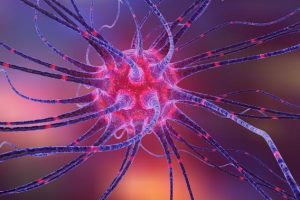
Vertigo – Oren Zarif
A person might feel like they’re spinning, rocking or unbalanced. Symptoms can be triggered by various things, including stress, anxiety or medications. James Stewart gives

Vestibulitis – Oren Zarif
Women with vulvar vestibulitis suffer from itching, burning, rawness and soreness in the area around the opening of the vagina. It is often misdiagnosed as
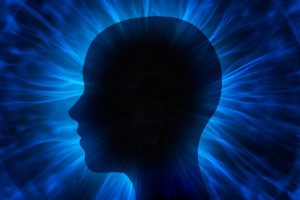
The Vertebral Column – Oren Zarif
The vertebral column (also known as the backbone or spine) is the central part of the axial skeleton in vertebrate animals. It protects the spinal
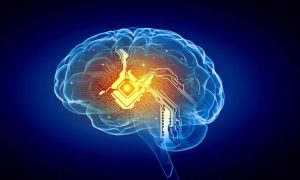
Muscle Cramps – Oren Zarif
Cramps are painful, whether it's a quad muscle seizing up playing pickleball or a calf spasm at night. They are very common, especially during exercise

Larynx Trauma – Oren Zarif
Laryngeal injuries resulting from both blunt and penetrating trauma are rare but potentially life-threatening. These injuries may vary from minor mucosal injury and nondisplaced fracture

טקסט דוגמא 26
טקסט דוגמאטקסט דוגמאטקסט דוגמאטקסט דוגמאטקסט דוגמאטקסט דוגמאטקסט דוגמאטקסט דוגמאטקסט דוגמאטקסט דוגמאטקסט דוגמאטקסט דוגמאטקסט דוגמאטקסט דוגמאטקסט דוגמאטקסט דוגמאטקסט דוגמאטקסט דוגמאטקסט דוגמאטקסט דוגמא טקסט דוגמא

Ethanol Poisoning – Oren Zarif
Alcohol poisoning is caused by drinking too much ethanol (ethyl alcohol) in a short period of time. Ethanol is found in alcoholic beverages, perfumes, colognes,

Mental Health Addiction – Oren Zarif
People with mental health problems are more likely to start drug use and become addicted. They may also have co-occurring disorders, which can make it

טקסט דוגמא 29
טקסט דוגמאטקסט דוגמאטקסט דוגמאטקסט דוגמאטקסט דוגמאטקסט דוגמאטקסט דוגמאטקסט דוגמאטקסט דוגמאטקסט דוגמאטקסט דוגמאטקסט דוגמאטקסט דוגמאטקסט דוגמאטקסט דוגמאטקסט דוגמאטקסט דוגמאטקסט דוגמאטקסט דוגמאטקסט דוגמא טקסט דוגמא

Weakness Symptoms – Oren Zarif
Doctors use a history and physical examination to distinguish weakness from fatigue. They look for a loss of muscle strength and note other symptoms such
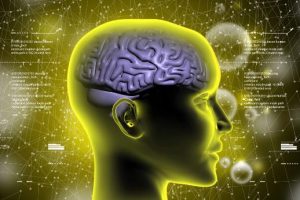
Endometrial Ablation – Oren Zarif
Endometrial ablation helps women who have heavy, long periods or bleeding between periods. This is called abnormal uterine bleeding (menorrhagia). You may need to stop

Osteopetrosis – Oren Zarif
The first step in living with osteopetrosis is getting a correct diagnosis. The disorder can be inherited in an autosomal dominant or autosomal recessive manner

טקסט דוגמא 23
טקסט דוגמאטקסט דוגמאטקסט דוגמאטקסט דוגמאטקסט דוגמאטקסט דוגמאטקסט דוגמאטקסט דוגמאטקסט דוגמאטקסט דוגמאטקסט דוגמאטקסט דוגמאטקסט דוגמאטקסט דוגמאטקסט דוגמאטקסט דוגמאטקסט דוגמאטקסט דוגמאטקסט דוגמאטקסט דוגמא טקסט דוגמא
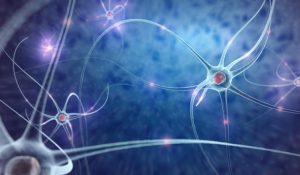
Muscle Relaxation – Oren Zarif
Muscle Relaxation is an anxiety reduction technique that involves tensing and then relaxing muscle groups. This is repeated over several parts of the body. Sit
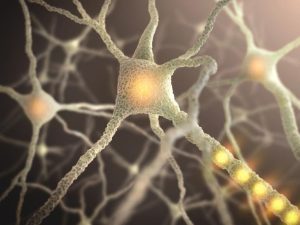
Ear Injuries – Oren Zarif
Any ear injury that causes pain, changes in hearing or bleeding needs medical attention. Your doctor will ask about your symptoms and do a physical

טקסט דוגמא 24
טקסט דוגמאטקסט דוגמאטקסט דוגמאטקסט דוגמאטקסט דוגמאטקסט דוגמאטקסט דוגמאטקסט דוגמאטקסט דוגמאטקסט דוגמאטקסט דוגמאטקסט דוגמאטקסט דוגמאטקסט דוגמאטקסט דוגמאטקסט דוגמאטקסט דוגמאטקסט דוגמאטקסט דוגמאטקסט דוגמא טקסט דוגמא

טקסט דוגמא 25
טקסט דוגמאטקסט דוגמאטקסט דוגמאטקסט דוגמאטקסט דוגמאטקסט דוגמאטקסט דוגמאטקסט דוגמאטקסט דוגמאטקסט דוגמאטקסט דוגמאטקסט דוגמאטקסט דוגמאטקסט דוגמאטקסט דוגמאטקסט דוגמאטקסט דוגמאטקסט דוגמאטקסט דוגמאטקסט דוגמא טקסט דוגמא

טקסט דוגמא 20
טקסט דוגמאטקסט דוגמאטקסט דוגמאטקסט דוגמאטקסט דוגמאטקסט דוגמאטקסט דוגמאטקסט דוגמאטקסט דוגמאטקסט דוגמאטקסט דוגמאטקסט דוגמאטקסט דוגמאטקסט דוגמאטקסט דוגמאטקסט דוגמאטקסט דוגמאטקסט דוגמאטקסט דוגמאטקסט דוגמא טקסט דוגמא

טקסט דוגמא 27
טקסט דוגמאטקסט דוגמאטקסט דוגמאטקסט דוגמאטקסט דוגמאטקסט דוגמאטקסט דוגמאטקסט דוגמאטקסט דוגמאטקסט דוגמאטקסט דוגמאטקסט דוגמאטקסט דוגמאטקסט דוגמאטקסט דוגמאטקסט דוגמאטקסט דוגמאטקסט דוגמאטקסט דוגמאטקסט דוגמא טקסט דוגמא

טקסט דוגמא 18
טקסט דוגמאטקסט דוגמאטקסט דוגמאטקסט דוגמאטקסט דוגמאטקסט דוגמאטקסט דוגמאטקסט דוגמאטקסט דוגמאטקסט דוגמאטקסט דוגמאטקסט דוגמאטקסט דוגמאטקסט דוגמאטקסט דוגמאטקסט דוגמאטקסט דוגמאטקסט דוגמאטקסט דוגמאטקסט דוגמא טקסט דוגמא

Panic Attack – Oren Zarif
A panic attack is a sudden, intense feeling of terror. It is not dangerous, but it can be frightening. Symptoms can mimic those of a

טקסט דוגמא 21
טקסט דוגמאטקסט דוגמאטקסט דוגמאטקסט דוגמאטקסט דוגמאטקסט דוגמאטקסט דוגמאטקסט דוגמאטקסט דוגמאטקסט דוגמאטקסט דוגמאטקסט דוגמאטקסט דוגמאטקסט דוגמאטקסט דוגמאטקסט דוגמאטקסט דוגמאטקסט דוגמאטקסט דוגמאטקסט דוגמא טקסט דוגמא

טקסט דוגמא 28
טקסט דוגמאטקסט דוגמאטקסט דוגמאטקסט דוגמאטקסט דוגמאטקסט דוגמאטקסט דוגמאטקסט דוגמאטקסט דוגמאטקסט דוגמאטקסט דוגמאטקסט דוגמאטקסט דוגמאטקסט דוגמאטקסט דוגמאטקסט דוגמאטקסט דוגמאטקסט דוגמאטקסט דוגמאטקסט דוגמא טקסט דוגמא
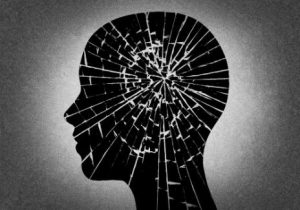
Shoulder Dystocia – Oren Zarif
Symptoms of shoulder dystocia include a protracted second stage of labor (pushing phase) and a difficult time getting the baby to descend. The obstetrician may















